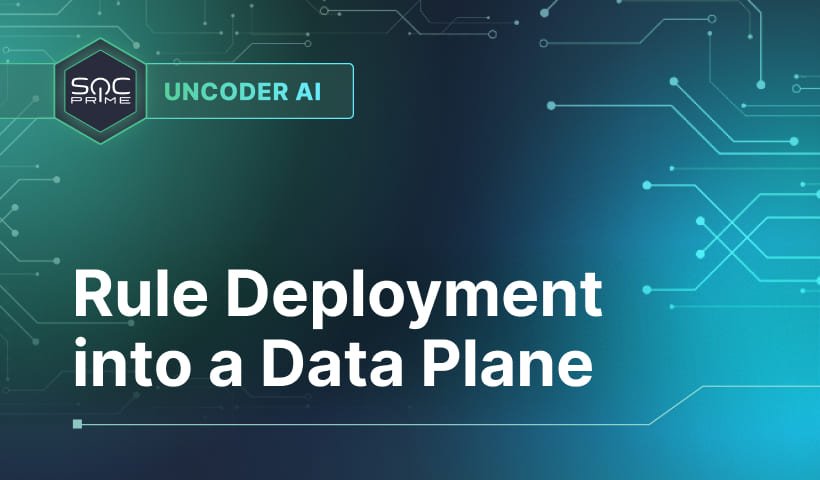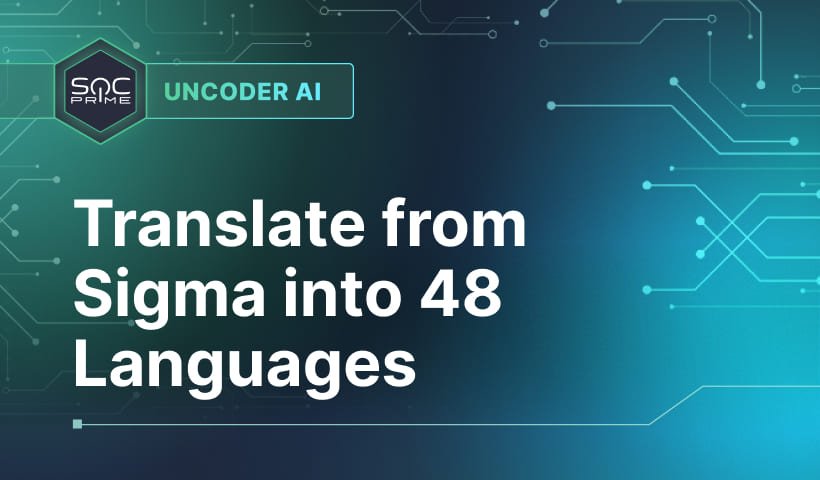Threat Hunting Tools: Our Recommendations

Table of contents:
A good threat hunt is unthinkable without useful pieces of software that help to navigate enormous pools of data. How can you tell the difference between good, bad, and benign? Analyzing all the intelligence, logs, history, and research data with one pair of eyes (even multiplied by many human Threat Hunters) would have taken years. And cybersecurity teams don’t have that much time. If you want a streamlined hunting process, you need to juggle quite a few professional tools.
In this article, we review some of the best threat hunting tools. Explore our fine selection, and try combining these solutions with our Cyber Threats Search Engine – such a hunt is definitely worth the catch!
Detect & Hunt Explore Threat Context
Top Threat Hunting Tools
Truth be told, it wasn’t easy to choose the best of the best. The market is full of interesting security products and services. Lots of them are threat hunting open source tools, freely shared on GitHub, if you don’t mind the “open” part. Big players also provide much value since they come with some serious global infrastructure and tons of tools packed in one solution. We’ll dive into them in a moment, but first, let’s refresh some basics. Just so we can understand, what’s the point in taking a systemic approach to choosing tools rather than chaotically implementing one on top of another.
What is Cyber Threat Hunting
Cyber threat hunting is a proactive cybersecurity process of searching for advanced threats within an enterprise’s digital infrastructure. Threat hunting is often based on a hypothesis that malware has already infiltrated the network. That’s why security specialists like Threat Hunters search for the indicators of attack, applying professional tools and methodologies to detect and isolate cyber threats.
Threat Hunting Process
Research shows that over 450,000 new malware strains are detected every day. It’s no wonder that no single cybersecurity solution can handle such a broad threat landscape. To boot, every organization’s network has a unique architecture, legacy, policies, interfaces, monitoring methods, and so on. Implementing and orchestrating proper security defenses becomes an important task. Continuous improvement of cybersecurity posture is necessary to withstand the exponential increase in cyber threats. That’s why Threat Hunters are there, trying to think a few steps ahead and prevent possible attacks.
There is also no one-size-fits-all tool for the threat hunting process. Every organization creates its own routine, depending on business context, available talent, technology, and budgeting.
Anyway, a common threat hunting process may look something like this:
- Risk assessment. This process comes first, often demanded by regulators. At this stage, security professionals identify critical security risks, along with risk appetite (what risks we can afford?), risk prioritization, and incident response playbooks. According to these policies, Threat Hunters identify what they should focus on.
- Threat intelligence. Gaining decent visibility of current threats is vital for organizing an efficient threat hunting process. Based on this information, Threat Hunters can formulate hypotheses and perform analyses.
- Threat analysis. This process might be driven by intelligence, hypotheses, available research, or machine-learning data findings. Threat Hunters might apply a range of different techniques, including sandboxing, scanning, threat emulation, and more. The goal is to find a threat, understand how it works, and find a way to mitigate it.
- Incident response. During this stage, Threat Hunters create algorithms and recommendations for threat detection and mitigation. These could be actionable algorithms like threat hunting queries or preventive recommendations like enabling or disabling some system processes.
As you can see, specific threat hunting tools can be used at any of the above stages. Due to the enormous amounts of data that are handled by the digital infrastructures every day, it’s hardly possible to hunt with only human effort and without any support from software tools.
Threat Hunting Open Source Tools
A great deal of cyber threat hunting tools is open source. This approach to building and maintaining security solutions makes it easier for them to scale and develop collaborative cybersecurity practices. Let’s review some of today’s most popular open source tools for threat hunting.
YARA
YARA rules are commonly used across many powerful security solutions. Threat Hunters actively use them on SOC Prime’s Detection as Code platform to write custom behavioral detections. YARA tool is officially recommended by CISA for malware families’ matching. You can match byte sequences, strings, and logic operators on precise conditions, which also reduces false positives. Specific YARA rules can detect malicious files during an incident handling process.
Check Point Research Tools
If a Threat Hunter wants to test malicious samples or just observe how they behave, they often use sandboxes. However, lots of malware strains have learned to understand their environment and delay or cancel execution in a sandbox. Luckily, you can use tools that make a researcher’s life easier and help to hunt for such threats. Visit Check Point’s GitHub, where you will find, among others:
- InviZzzible – identify malware that evades defense in your sandbox or other virtual environments.
- Cuckoo AWS – adds auto-scaling cloud infrastructure and functions to the Cuckoo Sandbox.
- Scout – Instruction-based research debugger.
Experienced hunters can look at things like assembly instructions and immediately recognize suspicious patterns. But quite often, the code looks absolutely normal, but it actually isn’t. That’s why, even if you feel like you know what’s going on, double-checking your assumptions with hunting tools might be useful.
Snyk
Software composition analysis tools like Snyk help Threat Hunters to scan the source code of applications for vulnerabilities. Being an open source platform itself, it also effectively scans thousands of dependencies in open source solutions and containerized environments as well. Snyk also finds possible license violations early in the lifecycle. Actionable security advice, automated fix tips, and seamless integration are among other bonuses.
Cyber Threat Hunting Tools
Hard-coded and curated threat hunting tools come with enhanced functionality and reliability. If open source tools come with lots of potential vulnerabilities because of their public nature, proprietary software is more secure. Moreover, it often comes with unique algorithms and vast cloud infrastructure capabilities that every Threat Hunter would appreciate.
Uncoder.IO
A so-called product overlap inevitably happens in cyber threat hunting operations when security engineers need to run detection algorithms on various types of software at the same time. It helps to ensure multi-layer cybersecurity protection. Of course, different vendors come with different content formats. To save time for more advanced tasks, Threat Hunters can use Uncoder.IO – a free online translation tool for Sigma-based detections, filters, saved searches, and API requests.
Autopsy
Host analysis tools are used by security researchers to perform host forensics analysis. Tools like Autopsy come with quite a rich functionality. You can check out the full list in their release notes. Overall, it’s convenient to analyze all hosts, regardless of particular endpoint types, and group findings either by analysis results or by data artifacts. However, this type of solution requires specific knowledge and is more suitable for advanced Threat Hunters.
Cisco Umbrella
Threat intelligence is something that Threat Hunters need more than air. And using reputable solutions like Cisco Umbrella is a breeze. As you know, there’s a wide choice of solutions in this area. But when it comes to a global cloud-native resource, you just get the most of what you can get from threat intelligence. Besides, they publish lots of valuable info absolutely free. Here you’ll find data sheets, solution briefs, use cases, and integration guides. And Talos provides vulnerability reports as well as detailed analysis of the latest threats.
MITRE CALDERA
Threat emulation is a must-have threat hunting tool. With CALDERA, powered by MITRE, you can automate your red team’s routine tasks and leave the most interesting cases to manual adversary emulation. Certainly, all these processes will be mapped to adversary TTPs. CALDERA consists of the core system and a bunch of plugins. Default ones look good for starters. As you move on, you can add more or even create your own plugins. On a blue team side, check out a CASCADE server created for investigative work.
NESSUS
Vulnerability scanners like NESSUS search for loopholes like no other. Hundreds of compliance and configuration templates are helpful for enhancing the vulnerability scanning process. Automated assessments give live results with plugin update recommendations. Vulnerabilities can also be prioritized, grouped, and automatically put in visualized reports that can be easily converted into a number of widely used formats.
Now that you’ve learned about the best threat hunting tools, it’s time to try them out if you haven’t already! Don’t forget that at SOC Prime, you’ve got integrations with cloud platforms, threat intelligence, vulnerability intelligence, threat hunting tools, as well as endpoint protection and SIEMs. And with SOC Prime’s Quick Hunt module, cybersecurity practitioners enjoy a seamless hunting experience by instantly searching for current and emerging attacks directly in their SIEM or EDR environment.



